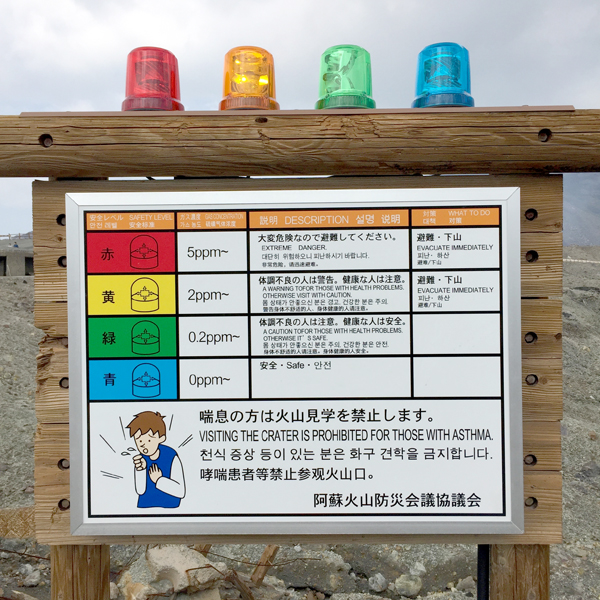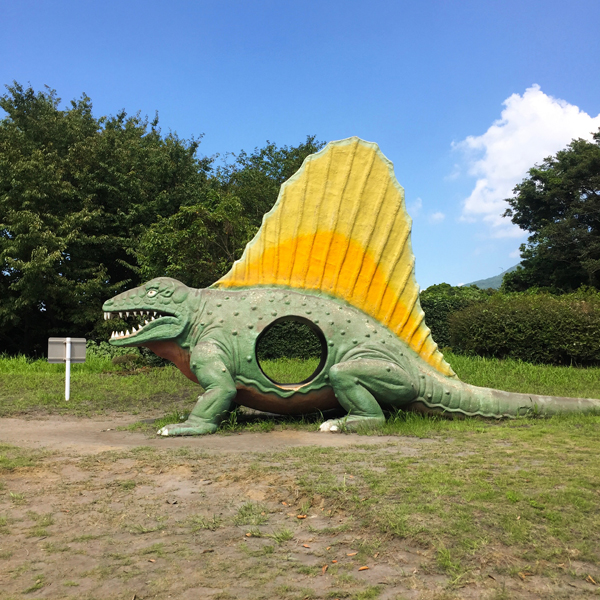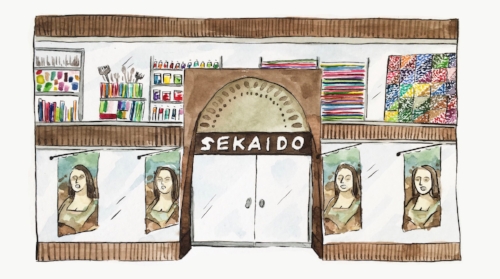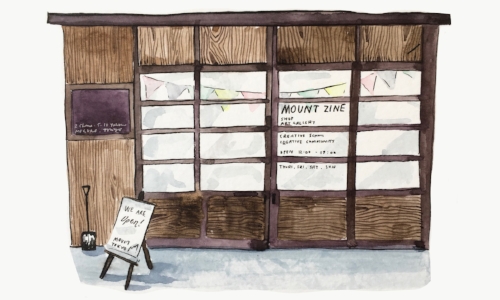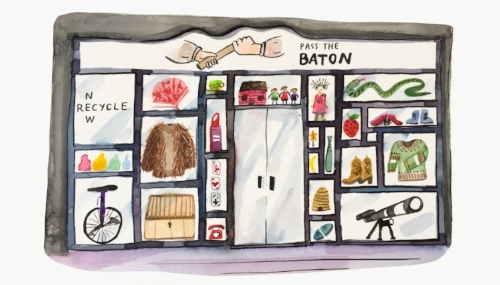My sadness at leaving the beautiful town of Takachiho (see previous post) was short lived, because... the landscapes! I was unhappy driving at this point, because rather than just gazing out of the window, I instead had to concentrate on the twisty mountain road that led north into my third prefecture, Kumamoto. I was headed to Aso-Kuji National Park, with no real plan but my heavily-starred google maps app.
My first stop was Kamishikimi Kumanoimasu Shrine. The stone steps lead up a hill into a pine forest directly from a main road, and don't look like anything special as you drive past. But keep walking up and up the steps (it's quite a way!) and you'll reach a lovely shrine for a quick break.
My uphill journey wasn't over though! The best bit is past the shrine, up a steeper hill, for which they thoughtfully provide bamboo walking sticks. I was considerably sweaty at this point, in the 35 degree midday heat. Thankfully the forest provides enough shade that I wasn't a complete puddle.
A cave! you can look directly through into the valley on the other side. It's truly beautiful. I had no idea this was here, but it was an ample reward for all the climbing. The place was peaceful and so quiet too, I passed only a couple of walkers on my way up, including this guy in the red t-shirt, usefully placed for scale!
After a convenience store stop to top up on water and ice, I made my way to Shirakawa Fountainhead. I didn't really know if it'd be worth a stop, I'd just read a few mixed reviews on google. But it was directly on my way to Mount Aso, and I had plenty of time! It was so tricky to get to, with roads only just wide enough for a car weaving underneath each other through farmland. It was so worth the effort though. It's a fresh water spring that bubbles up from the ground into a beautiful clear pond. You can fill up your bottles using special copper pans, and theres a separate stream that you can paddle in. I can't emphasise how truly delightful this was in the summer heat!
(Side note: There was also a sign that read that Shirakawa Fountainhead was 'one of the top 100 water sources in Japan', which is a hilarious non-brag. So Japanese.)
My next stop was Mount Aso! I was crossing all my fingers that I would stay lucky with the weather, as I'd heard that it was often impossible to see anything at the top. After another incredible, winding road and my ears popping approximately 949 times, I reached the Aso ropeway station. I had planned on parking here, and getting the ropeway to the crater. But that plan had a flaw, as it seemed that the ropeway station had been in absolute ruins for about 20 years. There were huge chunks missing from the walls and roof. Spooky. The fact that this is a very active volcano was scarily obvious. You can drive to the top on a toll road, and when you pay, you get a leaflet of health warnings as well as a ticket.
The crater! I will emphasise here that it was SO HARD to breathe. I am relatively fit and healthy with no breathing problems, and I found myself feeling short of breath and a bit dizzy too. There are warnings being constantly read out in Japanese, English and Chinese from a tannoy, as well as signs EVERYWHERE warning you of the health implications. In my twisted mind this only made it more intriguing. The sulphur lake at the bottom of the crater was turquoise blue, steaming up the sides of the mountain into the air. So beautiful. It felt like the surface of another planet. Despite the obvious health implications of spending a lot of time in a place like this, there were old men running stalls selling sulphur samples and volcanic rocks. I don't envy their lungs.
Emergency reinforced concrete shelters that have, worryingly, received a lot of damage.
Inside each shelter was a box of helmets and a broom. You can escape, if you're a witch.
After about 20 minutes at the crater, I was at the furthest point from the car park that you could walk to. I then heard the continuous tannoy announcements change tone. There was an alarm, and then some different Japanese. It sounded important. Then the English warning played.
"THE VOLCANIC GASES HAVE REACHED EXTREMELY DANGEROUS LEVELS. PLEASE EVACUATE IMMEDIATELY."
The red light on the danger scale was flashing and workers were escorting tourists back to their cars. I had to RUN back as I was so far around from my car! Also running was an enormous effort because the air was so sulphurous. I think the volcanoes of Kyushu have it in for me!
Thankfully I made it back down to safety, and felt really lucky that I had been able to see the crater at all. As we were all being evacuated, buses of tourists were arriving who then had to turn around immediately.
Next stop: Kurokawa Onsen town! I needed a good bath after all this hiking and being exposed to volcanic gases...
Have you visited Kumamoto or Mount Aso? Or do you have any questions about my trip? Please let me know in the comments!
Kate x








